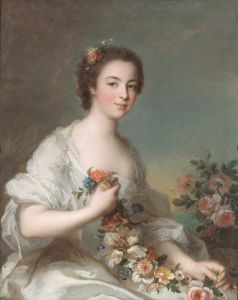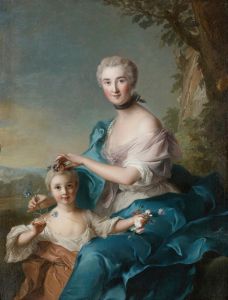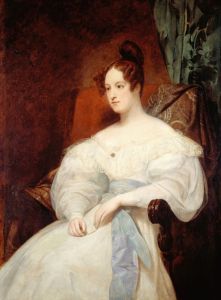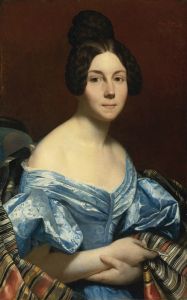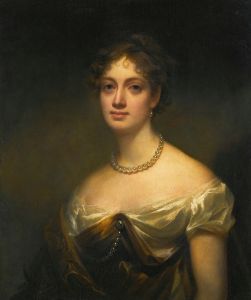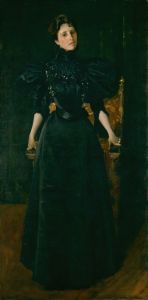
Portrait Of A Lady Holding A Carnation, Said To Be La Duchesse De Châteauroux
A hand-painted replica of Jean-Marc Nattier’s masterpiece Portrait Of A Lady Holding A Carnation, Said To Be La Duchesse De Châteauroux, meticulously crafted by professional artists to capture the true essence of the original. Each piece is created with museum-quality canvas and rare mineral pigments, carefully painted by experienced artists with delicate brushstrokes and rich, layered colors to perfectly recreate the texture of the original artwork. Unlike machine-printed reproductions, this hand-painted version brings the painting to life, infused with the artist’s emotions and skill in every stroke. Whether for personal collection or home decoration, it instantly elevates the artistic atmosphere of any space.
Jean-Marc Nattier, a prominent French Rococo painter, is renowned for his portraits of the French aristocracy during the 18th century. One of his notable works is "Portrait of a Lady Holding a Carnation, Said To Be La Duchesse De Châteauroux." This painting exemplifies Nattier's skill in capturing the elegance and grace of his subjects, as well as his ability to infuse his portraits with a sense of intimacy and charm.
The painting depicts a lady holding a carnation, a flower often associated with love and fascination. The subject is traditionally identified as La Duchesse de Châteauroux, a title held by Marie Anne de Mailly-Nesle, one of the mistresses of King Louis XV of France. However, it is important to note that the identification of the sitter as La Duchesse de Châteauroux is not definitively confirmed, and such attributions were common in the art world, often based on stylistic analysis or historical records that may not be entirely accurate.
Nattier's work is characterized by its delicate brushwork and the soft, luminous quality of his color palette. In this portrait, he employs these techniques to highlight the sitter's refined features and sumptuous attire, which is typical of the Rococo style that emphasized elegance and decorative beauty. The lady's dress is rendered with exquisite detail, showcasing Nattier's attention to the luxurious fabrics and intricate patterns that were fashionable among the French nobility of the time.
The background of the painting is kept relatively simple, allowing the viewer to focus on the subject. This approach is consistent with Nattier's style, where the emphasis is placed on the sitter's expression and pose, conveying a sense of personality and status. The inclusion of the carnation adds a symbolic element to the portrait, suggesting themes of romance or admiration, which were common motifs in the portraits of the era.
Jean-Marc Nattier was born in Paris in 1685 into a family of artists. He initially gained recognition for his historical paintings but later became famous for his portraits, which were highly sought after by the French aristocracy. His ability to flatter his subjects while maintaining a sense of realism made him a favorite among the nobility, and his works provide valuable insights into the fashion and culture of 18th-century France.
"Portrait of a Lady Holding a Carnation, Said To Be La Duchesse De Châteauroux" is a testament to Nattier's artistic prowess and his contribution to the Rococo movement. While the exact identity of the sitter may remain uncertain, the painting continues to be appreciated for its aesthetic qualities and its representation of the elegance and sophistication of the French court during the reign of Louis XV. Through this work, Nattier has left an enduring legacy that captures the spirit of an era marked by opulence and artistic refinement.









